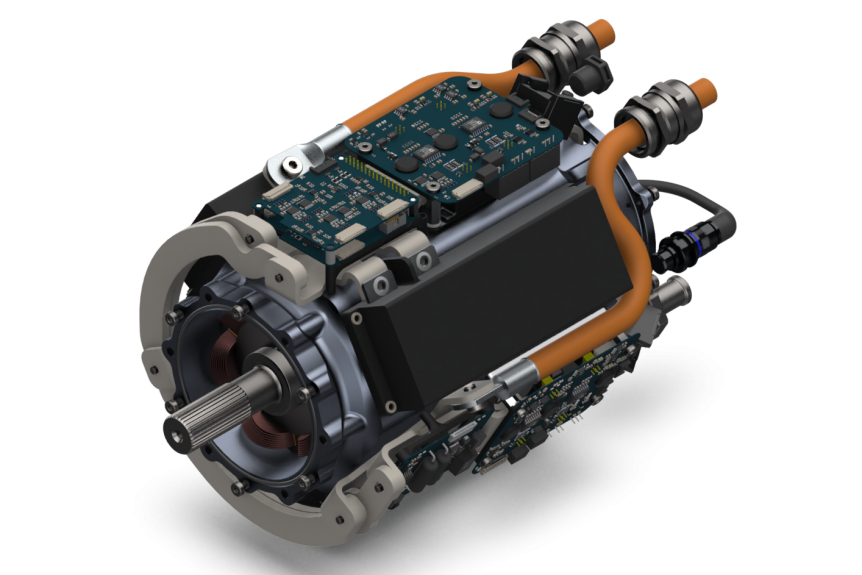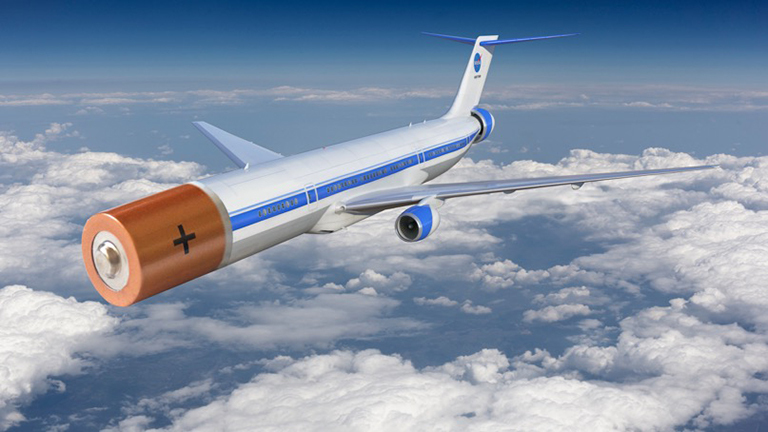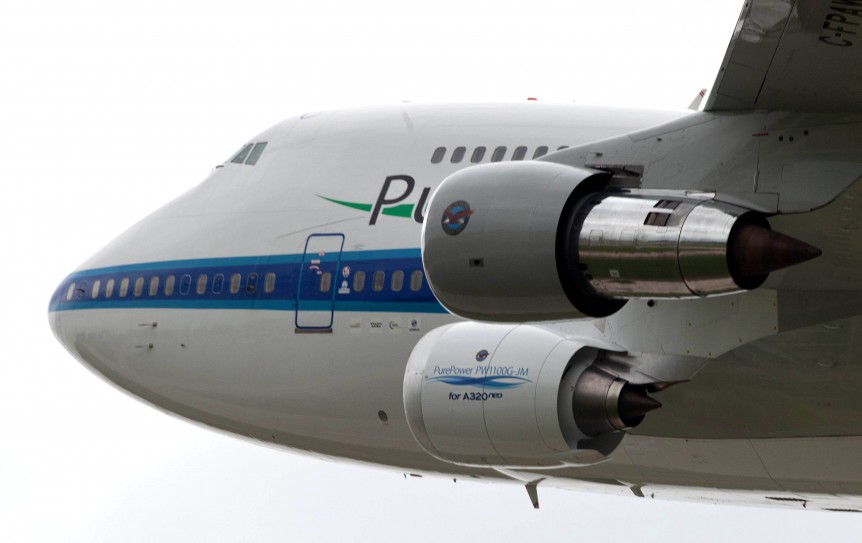H3X, a motor company started by three University of Madison, Wisconsin graduates, promotes its integrated motor/inverter power plant as “the next step in the evolution of electric propulsion technology.” With Their HPDM-250’s 13-kilowatt-per-kilogram continuous power ability, it meets ARPA-E’s (Advanced Research Projects Agency–Energy’s) criteria for powering large, 737-type aircraft. Electronics Weekly reports, “ARPA-E has determined that for a Boeing 737 to complete a typical five hour flight, the propulsion system must be >12 kW/kg continuous.” H3X adds, “These specifications are estimates based on electromagnetic thermal and structural simulations. Data from dynamometer will be available Q2 2021.” Their motor is roughly twice as power dense as MagniX motors of similar power, according to H3X. Weight reduction is an intrinsic part of aircraft design. In the days of internal combustion engines (still very much with us), conventional wisdom held that reducing power plant weight by one pound could help take two pounds off the airframe. Even today, ICE engines generally produce only …
Clean Jet Fuel from the Air?
What if we could suck carbon from the air, make clean jet fuel out of it, and reduce greenhouse gas emissions by using this fuel in our airliners? That’s a dream pursued by many researchers, and recently Rotterdam the Hague Airport announced a study to sort out the plausibility of such a plan. First, though, we need to look at the numbers for how much fossil fuel would have to be replaced. These are Big Numbers How much fuel goes into a large jetliner? How efficiently is it used? These are matters of concern to airline executives on a profit-and-loss basis, and to all of us on an environmental basis. Let’s look at the Boeing 787 Dreamliner variants for an idea of how efficient a modern airliner can be. The 787-8 burns 4,900 kilograms (10,780 pounds) per hour or Jet A, while the larger 7879 consumes 5,600 kilograms (12,320 pounds) per hour. Converting pounds (the way the military and airlines …
Electric Propulsion for Big Birds
Graham Warwick reports in the August 25 Aviation Week that NASA is investigating the creation of megawatt-scale electric propulsion systems for airliners. These would be much more powerful than those in cars or even semi-trucks, and far lighter than equivalent units in ships. NASA’s research involves partnering with the University of Illinois, Ohio State University, General Electric, and Boeing. NASA Glenn Research Center is working on its own self-cooled, superconducting wound field synchronous motor as part of the overall effort. NASA’s focus, according to the article, “is on electric machines that can be used as generators (sources) and motors (loads) and power electronics that convert AC to DC (rectifiers) and DC to AC (inverters).” Research includes wiring systems that can distribute high levels of electrical power. These efforts would support “near- or medium-term development of partially turboelectric and hybrid-electric propulsion systems for aircraft up to single-aisle airliner size.” Ambitious Goals, Different Approaches Goals are ambitious, with NASA Research Agreements (NRAs) awarded …
Flying More Economical, Less Polluting Than Driving?
Ilan Kroo, in a 2014 Electric Aircraft Symposium presentation, showed that a “narrow-body” airliner (for example, the Boeing 737-800) is able to fly one passenger coast-to-coast on 29 gallons of fuel, at about 81 passenger miles per gallon. Driving responsibly, a carpool of four or five in a Prius could show greater operational economy, but take about 40 or more hours to make the trip (and lots of breaks) compared to the five hours in one jump it takes the Boeing. Worse, the same Prius is often stuck in gridlock traffic for short drives with only the driver on board. Even a hybrid’s mileage suffers under such circumstances. Several popular publications have taken up that “meme” in the last week. Nick Stockton, writing in Mother Jones’ environment section, informs his readers that airlines are already competitive with cars on a passenger mile basis, and that because “Fuel economy is hardwired into the airline industry’s DNA,” there could be benefits for …
Noise or Emissions – We Can Do Without Both
GreenAirOnline, a web report on mainly airline attempts to promote environmentally-friendly flying, has two not-unrelated stories in today’s edition. Noise abatement is a major issue for British airports, especially those in the southeast, according to the first story. Kate Jennings, Head of Aviation Policy Implementation at the Department for Transport, says the government recognizes that it is a “particularly contentious issue.” Even though noise has been reduced for individual flights, flight frequency has increased and measured noise footprints don’t always match the perceived noise levels that drew public complaints, Ms. Jennings reported. “That’s why at an ICAO (International Civil Aviation Organizaton) and political level we need to keep the pressure on to identify ways of further reducing noise and there needs to be an intelligent debate on the trade-offs between emissions and noise,” she told the recent UK Airport Operators Association (AOA) Environment Conference in London. British airports have been practicing several approaches to cutting both emissions and noise, including …




